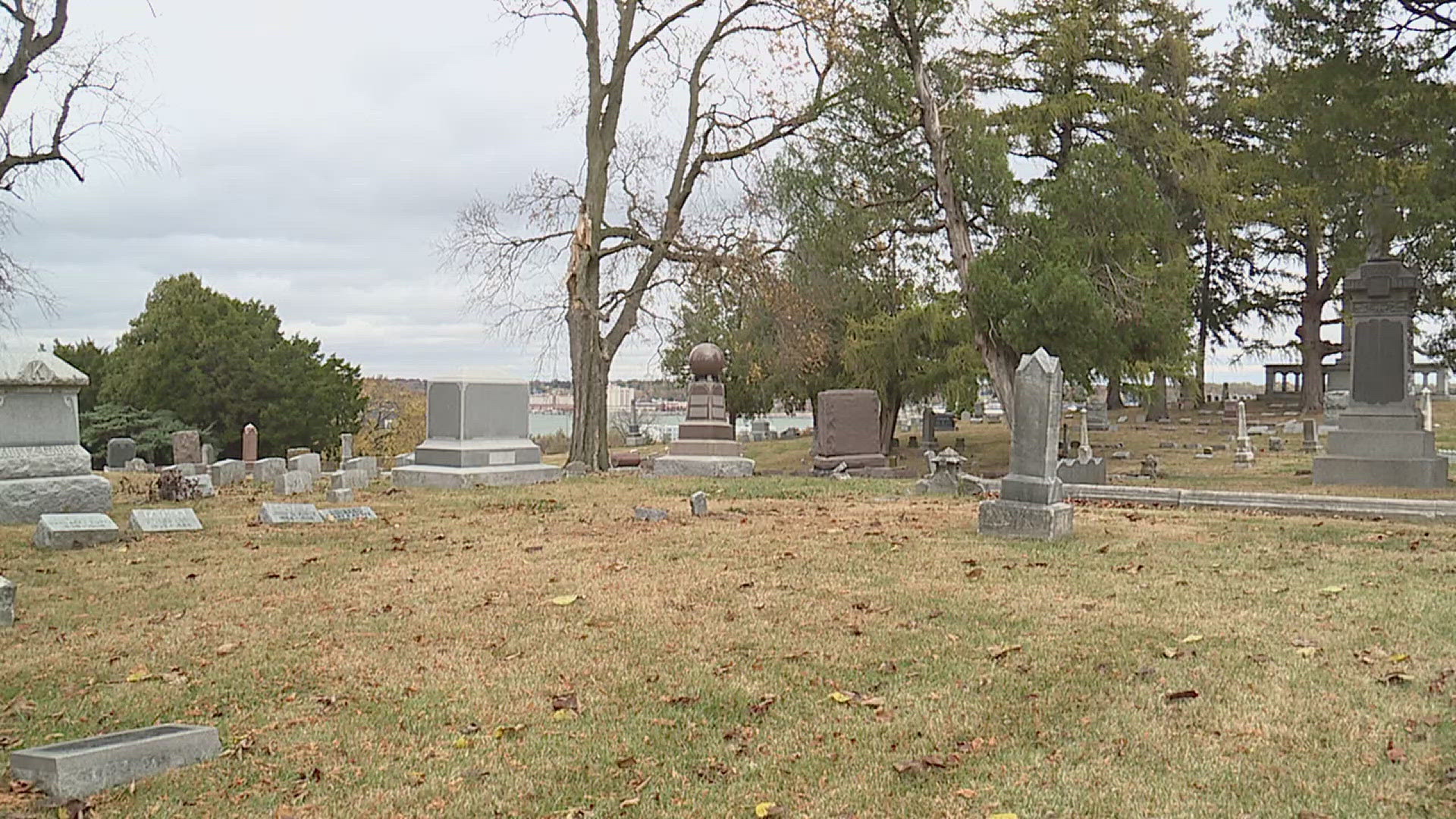MOLINE, Ill. — Step into a cemetery, and you're stepping back into time.
This Halloween, News 8 spoke to Brandon Dean, a University of Iowa religious studies professor, on how you can 'read' cemeteries and the tombstones within them.
For example, the older section of a cemetery will often have tombstones with symbols on them. An anchor might symbolize hope, while tree stumps in the 1800s shows someone whose life might have been cut short, or someone who was in the world of wood working.
As you move through a cemetery from there, it's common to see Midwestern names move from 'Smiths' and 'Millers' to those with more Czech and Slavic backgrounds. A few more rows up and you start to see the movement of more immigration, with Hispanic, Asian, Middle Eastern and more differing last names popping up.
Dean also notes the changing patterns of how people were buried - from large, family plots in the 1800s to the modern day plots that are typically just a married couple. As tombstones get newer, you also notice the use of lasers to carve intricate artwork into the headstones, as well as more statues.
"It's like the Grand Canyon," Dean said. "It's archeology that discourages digging!"
You can check out Dean's full interview, with even more tips of what to look for in a cemetery, in the above video.
Tune into The Current from 4 to 5 p.m. on weekdays to catch live interviews impacting you, your family and your hometown as well as all of the biggest headlines of the day.

